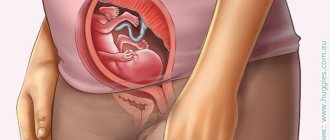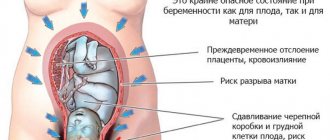The significance of this indicator during pregnancy
Cervix uteri is the Latin name for the lower part of a woman's reproductive organ. Inside the cervix is the cervical canal. Its upper part is icy with the body of the uterus itself, and the lower part descends into the vagina. The functions of Cervix uteri are as follows:
- Protection of the reproductive organ from various pathogenic microorganisms.
- The cervical canal is tightly closed with mucus, so it does not allow even sperm to enter the vagina at the wrong time.
- On the day of ovulation, the cervix opens and allows male reproductive cells to pass through. Thanks to this, pregnancy occurs.
After conception occurs, the Cervix uteri is again tightly closed with a mucus plug, reliably protecting the fetus from infection and other pathogenic microorganisms that can enter the reproductive organ through the vagina. Another important function of the cervix is to hold the baby as it develops in the womb.
If the Cervix uteri is weak, the woman is at risk of miscarriage or premature birth. That is why it is so important to monitor the condition of the cervix of the uterus throughout the entire period of gestation.
Softness during pregnancy

The time period after conception and before the normal resolution of labor can be called the most exciting period in the life of expectant mothers. Pregnant women have to go through many difficult moments if they are diagnosed with a soft cervix. Probably, such a production is considered a completely natural physiological metamorphosis that does not allow for experiences. A number of cases of ignoring this fact often led to irreparable consequences.
As stated above, until the moment when a woman’s body is ready for fertilization, the ovulation process occurs, the cervix softens and rises to the top, allowing sperm to more easily achieve their goal - fertilization of the egg.
After conception, the cervix, as a rule, becomes denser again - in a sense, the uterus is blocked. This allows embryos to develop normally, without fear of leaving the uterus.
Over time, the fetus will have to develop, grow, gain weight, and begin to put more active pressure on the lower part of the uterus, where the cervix is located. If the muscle tone of the organ is insufficient, any cervix will have to soften and open, which threatens “with the exception of the prenatal period” with premature delivery of the fetus, in other words, this will be a miscarriage.
Based on statistics, you can find out that such pathological processes are quite common from the 20th to the 30th week of pregnancy. Obstetricians and gynecologists consider the 24th week to be the most critical.
We also recommend reading: Rhinitis in newborns
In cases of normal pregnancy, physiologically justified softening occurs literally before the onset of labor. Thus, the woman’s body needs to prepare for the passage of the baby through the birth canal during the birth process.
How does the measurement work?
These parameters are measured in medical practice in two ways. The first method is examination on a gynecological chair using a mirror and a colposcope. The second way is to conduct an ultrasound examination. During a gynecological examination, the doctor determines the condition of the external pharynx, the density of the cervix and the presence of dilation of the cervical canal. Ultrasound helps measure the length and obtain more accurate information about the condition of the internal pharynx.

The length of the cervix is usually measured after the 20th week of pregnancy. In the first weeks, this indicator, as a rule, is not checked. This is explained by the fact that it is during this period that the baby’s active growth is observed.
Features of measurement in early and late stages
Normally, in a woman in the absence of various diseases, the length of the cervix should be approximately 3-4 cm and the width about 2.5 cm. These figures are not absolute and may be less or more depending on the individual characteristics of the girl’s body. If pregnancy has not occurred, Cervix uteri has a pink tint, a smooth structure and a somewhat shiny surface. After conception, the organ undergoes changes. Due to increased blood circulation in this area, its color becomes bluish or purple.

In addition, the process of maturation of the CMM begins. It will last all 9 months. At the same time, this part of the organ grows, becomes thicker and more elastic. This is necessary for normal labor. It is worth noting that in the early stages of pregnancy the Cervix uteri should deviate slightly towards the anus and close tightly. In the later stages, the doctor can assess by the condition of the cervix how close the woman is to giving birth. At the same time, this part of the uterus becomes softer, and the length of the cervix gradually shortens. On an ultrasound examination, you can see that the internal os is expanding, which indicates the imminent onset of labor.
You may be interested in reading an article on the topic of hCG in early pregnancy. All the necessary information is in this article.
Normal organ length by week
Timely diagnosis of abnormalities in the cervix allows you to take all measures to prevent negative consequences. In modern medical practice, various treatment methods are used to treat cervical cancer pathologies. These include both medications and special fixing devices to support the cervix. That is why doctors recommend that expectant mothers register in a timely manner and undergo Cervix uteri measurement at least four times.
You might be interested in: How to tell if you're pregnant at home

A routine examination of this indicator is carried out approximately at 20, 26-27 weeks, and then at 32-34 and 37-39 weeks of pregnancy. In the table you can see what the length of the cervix should be at different stages of gestation.
| Gestational age in weeks | Average values in mm | First pregnancy | Second and subsequent pregnancies | Standard size in mm | Deviation from the norm |
| 10, 11, 12, 13, 14, 15, 16 | 35 | 35,2 | 35,7 | 23-45 | 5 |
| 17, 18, 19, 20 | 36 | 36,7 | 36,8 | 30-49 | 5,8 |
| 21, 22, 23, 24 | 40,4 | 40,6 | 40,7 | 33-45 | 4,8 |
| 25, 26, 27, 28, 29, 30 | 42 | 40,7 | 42,5 | 33-46 | 4,8 |
| 30, 31, 32, 33, 34, 35 | 36,7 | 35,9 | 36,4 | 36-43 | 3,9 |
| 35, 36, 37, 38, 39, 40, 41, 42 | 28,7 | 28,3 | 28,7 | 21-37 | 4,5 |
If in the first and second trimester the cervix is shortened or short, this indicates a threat of miscarriage or premature birth. In this case, the patient requires hormonal or other types of therapy. The prognosis for a woman is not very good even if the cervix is too long before the upcoming birth. In addition, it should be noted that in primiparous girls, the length of the Cervix uteri increases more slowly than in multiparous girls.
In case of twins, the length of the cervix may differ slightly from the indicators discussed above. However, it may be slightly shorter than with a singleton pregnancy.
Consequences
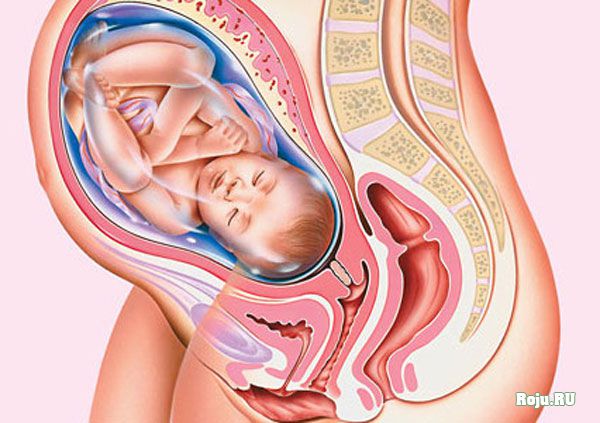
Summarizing all the above-mentioned consequences of the process discussed in this article, we can say that everything mainly depends on the existing pathology or, if pregnancy is implied, on the gestation of the child, during which softening is diagnosed.
Mostly this process is of a physiological type and is quite explainable, because softening is laid down at the genetic level and does not contradict nature. In pathological manifestations of this factor, the result of changes in the structure may be a miscarriage or much more severe pathological changes.
By what indicators does the doctor judge the maturity of the cervix?
During a medical examination, not only the size of the cervix, its shortening or, conversely, lengthening are taken into account. Other criteria also indicate the degree of maturity of the organ. Let's look at them:
- Consistency of CMM. It is rated in points - dense - 0, soft - 1, soft - 2.
- Length. From 2 cm – 0, 1-2 cm – 1, less than 1 cm – 2.
- Location relative to other organs. Tilt back – 0, tilted forward – 1, in the center – 2.
- The degree of opening of the cervical canal. The doctor's finger does not pass - 0, one finger passes - 1, passes 2 fingers - 2 points.
Cervix uteri should be more dense to the touch in the early stages. In the second and third trimester, it becomes softer and smoother, which indicates that it is almost ready for childbirth. If any abnormalities are detected in the expectant mother, the doctor is obliged to inform the patient of the diagnosis and explain what to do to prevent dangerous complications.
You might be interested in: 37th week of pregnancy: what happens to the fetus and how the woman feels

A soft cervix, for example, at 38-39 weeks does not mean that the expectant mother has some kind of pathology. This is a completely normal phenomenon before childbirth. It is much worse if the cervix is dense and immature at this stage.
Treatment options
If a soft cervix is diagnosed between 13 and 25 weeks, doctors carry out a number of therapeutic measures to prevent the threat of miscarriage.
Treatment mostly depends on the causes that caused the pathology. In case of hormonal imbalance, in a hospital setting, the pregnant woman is prescribed medications to stabilize hormone levels. At the same time, medications are used that reduce tone, thereby strengthening the density of the pharynx. Complete rest is also recommended to avoid premature birth.
A soft and short neck becomes an indication for the installation of a pessary. The device, in the form of a ring, is attached to the os of the uterus, prevents premature dilatation and evenly transfers the weight of the growing fetus around the entire perimeter.
If the risk of labor starting prematurely is too high, then surgical intervention is used by suturing the cervix. The operation is performed under general anesthesia for 15-20 minutes, while the internal os is tightened with special threads, which helps maintain pregnancy until the normal period of 37-38 weeks.
Once the baby is fully formed, the sutures are removed, and the decision about the choice of delivery method depends on additional factors. It is not uncommon for a woman to give birth on her own without a cesarean section.
If a pathology is detected, it is necessary to understand that the risk of miscarriage is very high, therefore maximum rest is required, avoid lifting heavy objects, and also refuse sexual activity so as not to provoke labor.
Possible deviations from this body
Measuring the length of the cervix during pregnancy makes it possible to timely suspect various pathologies in a woman. These disorders can cause serious problems, including fetal death and premature birth. Let's take a closer look at common problems.
Ectopic pregnancy in the cervix
It happens that in the early stages of pregnancy the cervix is too enlarged. In this case, the doctor may suspect such a dangerous condition as the attachment of a fertilized fertilized egg in this part of the genital organ. Under such conditions, the embryo lives for approximately 5-6 weeks, less often 6-7, after which it dies and is rejected.
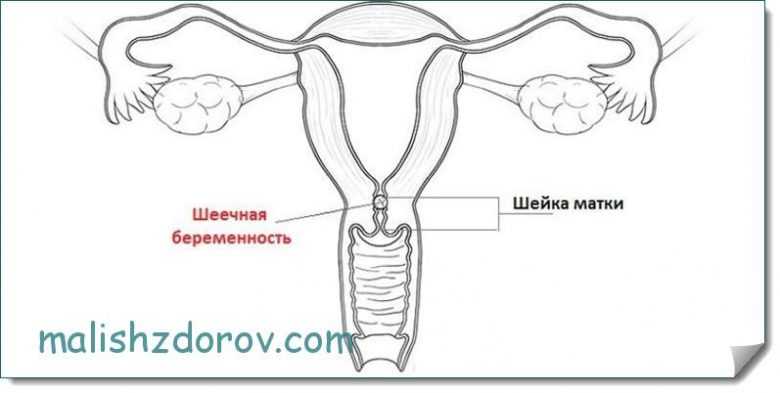
This type of pathology is considered quite rare and occurs no more often than in 0.01% of cases. Read more about ectopic pregnancy here.
Short neck
Shortening of this part of the organ can be either a congenital or acquired condition. In addition, it often happens that such parameters are observed in a woman due to the anatomical features of her body. Normally, the length of the cervix increases in the first and second trimester and shortens immediately before childbirth. If the length of the organ is too short, it will be difficult for it to support the growing fetus, which often leads to premature birth.
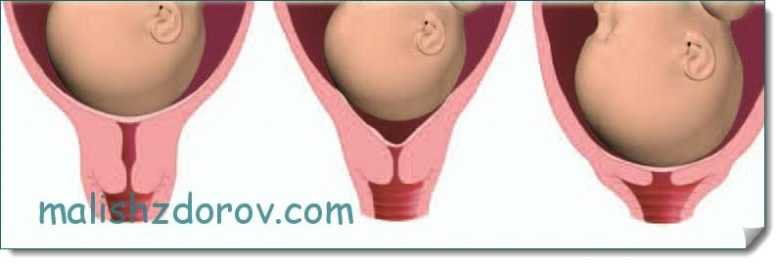
If such a condition is detected, the woman is subject to stricter medical supervision. Often, the expectant mother is offered to go to a hospital for preservation and completely limit physical activity. In addition, methods of treating this pathology include the installation of a pessary - a special ring that prevents the pharynx from opening prematurely. This device is removed before childbirth.
Extended neck
This disorder in women can also be a congenital feature of the body or develop as a result of various medical manipulations in this area, for example, after undergoing operations. This feature may cause some problems during conception. We can talk about, for example, improper attachment of the fertilized egg when it is implanted too low to the exit from the reproductive organ.
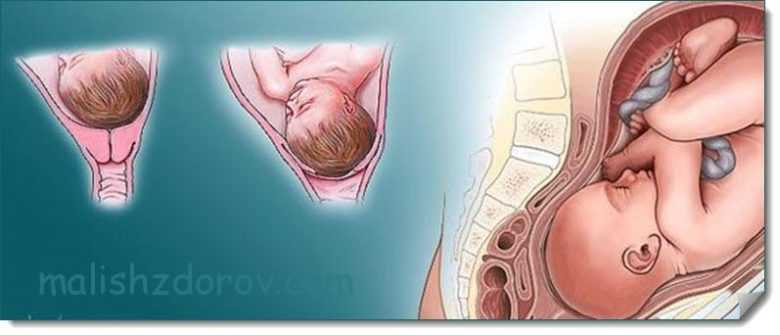
Childbirth is also complicated for women with this deviation. They are usually painful and protracted, and the risk of rupture increases.
Erosion
Sometimes the length of a woman’s cervix during pregnancy is normal, but a disease such as erosion may be detected. This disorder occurs among the fair half quite often, in approximately 60% of cases. Factors that provoke pathology include a wide variety of causes. These could be hormonal disorders, inflammatory processes in this area, and much more. Treatment of the disease is carried out using minimally invasive techniques such as cauterization and laser treatment. If erosion is diagnosed in a nulliparous woman, treatment is postponed to rule out problems with the resulting scar. At the same time, the expectant mother faces the threat of organ rupture and other dangerous complications.
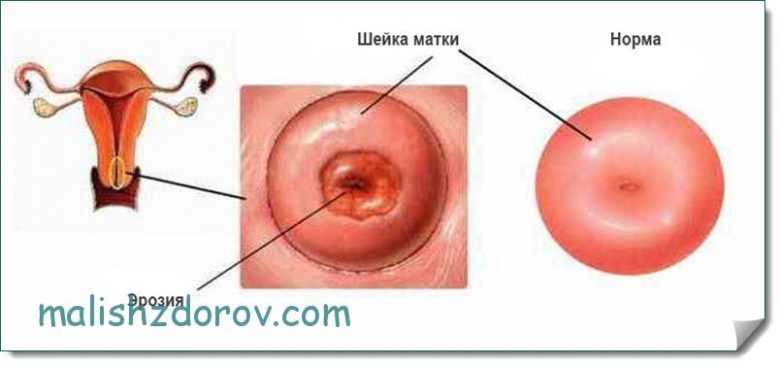
For many girls, after childbirth, erosion goes away on its own. The pathology does not affect the course of pregnancy itself.
Dysplasia
During colposcopy, another problem may be discovered in the patient - dysplasia. Pathology involves processes of change in the epithelium, which indicates precancerous conditions. In most cases, the disease is diagnosed in women aged 25 to 35 years. Timely treatment of pathology in the early stages allows you to cope with the disease without developing dangerous complications.
You may be interested in: Folic acid during pregnancy: instructions for use

The causes of dysplasia include human papillomavirus. The risk group includes girls suffering from bad habits, as well as patients with weakened immunity and the presence of chronic inflammatory diseases. Another reason is the start of sexual activity too early and frequent changes of sexual partners. Treatment of the disease is carried out with medication or surgery.
Expert opinion
Ksenia Dunaeva
User experience expert and comment moderator. Higher medical education and more than 5 years of actual practice.
Ask Ksenia
A mild degree of dysplasia rarely degenerates into oncology, so this condition requires only medical supervision.
Ectopia
This concept means the same erosion, but with it part of the columnar epithelium is displaced into the vaginal area. During the examination, the gynecologist may see a red round spot that looks very similar to erosion. In this case, the patient may experience discharge with an unpleasant odor and uncharacteristic color. The causes of this pathology include mechanical damage to the reproductive organ, as well as various infectious diseases suffered by a woman in the past.
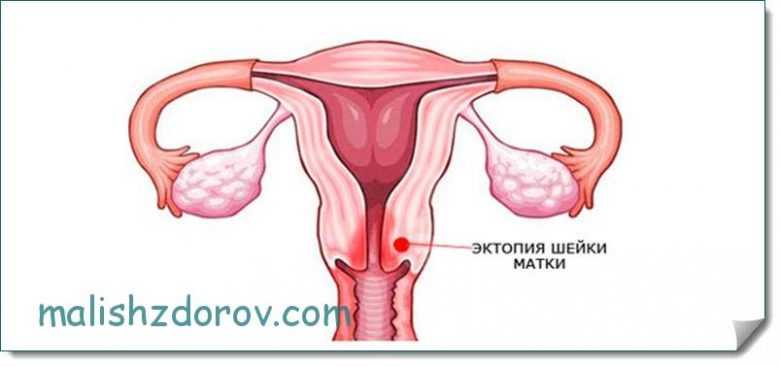
After bearing the baby and giving birth, changes in the form of ectopia observed in the patient, as a rule, go away on their own.
Features of treatment of the uterine cervix

The phenomenon described in this article is both in terms of the symptoms of a number of diseases, therefore it is important to implement therapeutic measures in relation to specific diseases, and a natural and normal process. Therefore, treatment is a controversial issue.
If we talk about childbirth, the maturity of the uterine segment in question at a given hour is determined by experts using the Bishop scale. Obstetricians-gynecologists calculate maturity during examination of women in labor.
In order for the birth to take place without significant ruptures and other damage to women in labor and unborn children, the cross-sectional dimensions for the passage of the child through the canal at the first stage should be within 10 centimeters.
However, if the time has not yet come for the birth of a child, and the woman has been diagnosed with the diagnosis discussed in the article, this does not yet indicate that she will not be able to bear a healthy child. Such patients are assigned to bed rest and, in fact, will have to remain in this mode until delivery. For the legs in the case of such orthopedic beds, an angle of thirty degrees is selected.
It is important for such women in labor not to encounter severe overload. This applies not only to the physical, but also to the emotional aspect of life.
If specialists were able to recognize uterine hypertonicity, it is necessary to hospitalize the pregnant woman.
In this case, the pregnant woman is prescribed the means necessary to relax the muscles of the uterus, and in some cases to stimulate the tone of the object in question, thereby strengthening it.
In many situations, the softening of the object being studied is accompanied by observation of its small size. With such a clinical picture, doctors talk about cervical incompetence.
This can cause the loss of a child in the already late period “twentieth - thirtieth week of gestation.” Then the obstetrician-gynecologist is given the opportunity to use the pessary. It is a special device made in the shape of a ring. It is fixed on the neck, interfering with the segment, and diverges prematurely. It is also important for protecting the segment in question from excess pressure observed from the developing fetus.
The installation procedure is carried out quite quickly, trying not to cause any discomfort to the pregnant woman. The pessary is removed closer to the end of pregnancy: at the 37th or 38th week. This placement and removal procedure is carried out exclusively in a maternity hospital.
The reason lies with the likelihood of activity of a generic nature almost immediately after removing the tool.
Such innovations allow women in labor to reach their due dates and give birth to strong and healthy babies.
We also recommend reading: Fetal hypotrophy
It is important to mention such a method of creating problems as applying surgical sutures to a segment by tightening the segment discussed in this article using catgut.
Application to close the segmental canal is carried out only in stationary conditions and under anesthesia.
The most suitable time for the procedure is the period from the 14th to the 20th week. Before undergoing the procedure, a pregnant woman must undergo the necessary examinations. Such patients remain under mandatory monitoring by the attending physician until delivery.
The method, like most others, can cause a number of complications, or is simply not able to produce the expected effects. However, in the vast majority of cases, this event brings favorable results.
When there is a functional deficiency of the segment, patients receive the body’s support in terms of medication. In prevailing cases, drugs are made on the basis of a substance such as progesterone. This drug prevents premature weakening of muscle tissue.
If a woman is not yet pregnant, sometimes the topic of uterine segment plastic surgery is raised. In this case, they must take into account the medical history: the number of births, interrupted pregnancies, the presence of gynecological diseases, etc. Although this correction does not contradict cases with pregnancy.
Recommendations for the expectant mother during pregnancy
The period of bearing a baby is a very important and responsible time in the life of every woman. At this stage of life, the expectant mother should be very attentive to her body, since now she has double responsibility. To prevent various complications and miscarriage, a girl should adhere to the following recommendations:
- Walk outdoors more often.
- Sleep and relax more.
- Properly organize working conditions and daily routine.
- Eat right, saturate your body with all the necessary vitamins and minerals.
- To refuse from bad habits. Smoking and alcohol negatively affect the health of the mother and fetus.
- Register in a timely manner and follow all recommendations of the specialist.
- Avoid heavy lifting and heavy physical work.
- Try to eliminate stress and excessive emotional disturbances.
- Devote more time to communicating with loved ones, read books, watch calm films.
If any alarming symptoms occur, you should contact your doctor immediately. All this will help maintain the health of mother and child, as well as prevent such dangerous pathologies as miscarriage, placental abruption and premature birth.

Do you want to know how to register during pregnancy? Then you should definitely read this article.
Complications

Any pathology entails disruptions in the functioning of the patient’s body. Complications may be as follows.
- As noted repeatedly above, a miscarriage may occur.
- Doctors may diagnose infertility for similar reasons.
- These complications turn out to be enough for women dreaming of motherhood to think about it and turn to obstetricians and gynecologists.
We also recommend reading: Increased intracranial pressure in a child




